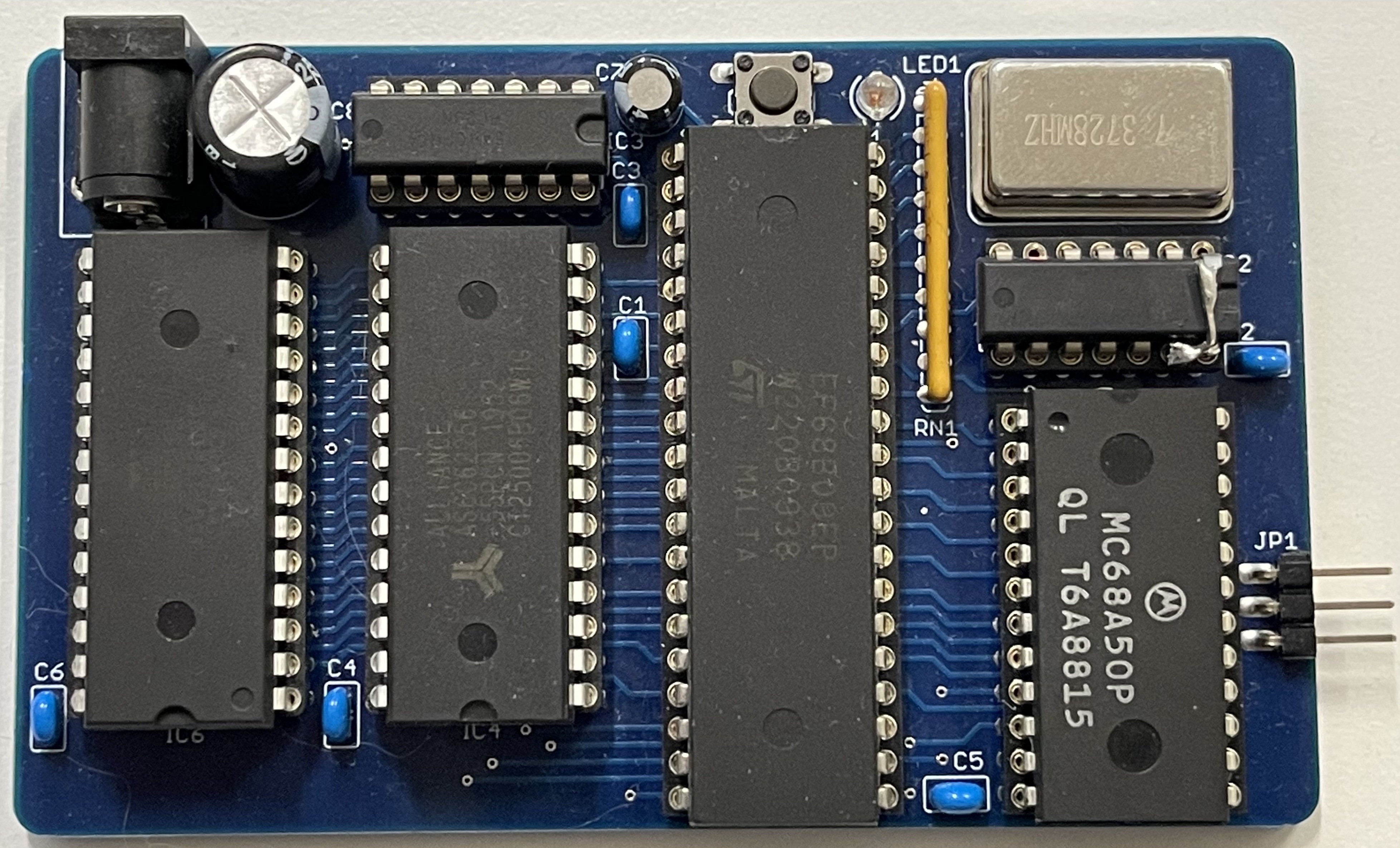The problem with getting a computer board working is that both the hardware and software need to be working correctly. If both are new then chances are neither works, so how to fix them?
In my case I decided to solve the problem in little steps. I found a blog by Jeff Tranter (http://jefftranter.blogspot.com/2019/01/a-6809-single-board-computer.html) where he had a simple design and functional software. Perfect! I could take the design, make my own PCB and the software on his git page to verify my version, then use the working hardware to verify my cross-assembler. With both of these tested I can make a 'real' design, safe in the knowledge I could debug it with known-working software.

As you can see, my cautious strategy paid-off. When there was no output from the serial port I knew that the fault was on my board, and a few minutes with a 'scope showed there was no clock signal. The 74HC74 CLR inputs were tied low rather than high.
Still no activity. A couple more minutes and I could see that E and Q had been swapped. Remove pin 6 and put a link between Pin 5 and 6 on the PCB and there was activity on the serial port. Success, I had the Assist09 prompt on my terminal emulator.
I now have a functioning platform to verify my development tools with, and verified footprints for a more complex design, so while it's disappointing I made a couple of simple errors they justify the 'small steps' approach.
I will link a GitHub page later to contain all the files as I proceed.
Discussions
Become a Hackaday.io Member
Create an account to leave a comment. Already have an account? Log In.